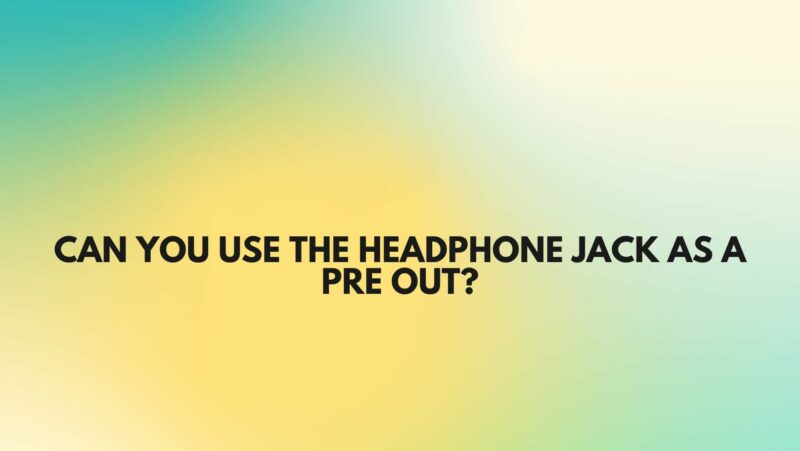Audio enthusiasts and home theater aficionados are always looking for innovative ways to optimize their sound systems. One question that often arises is whether you can use the headphone jack as a pre-out. A pre-out is a line-level audio output that typically connects to an external power amplifier, while the headphone jack is designed for personal listening through headphones. In this comprehensive article, we’ll delve into the possibilities, advantages, and limitations of using the headphone jack as a pre-out.
Understanding Pre-Outs and Headphone Jacks
Before we explore the feasibility of using a headphone jack as a pre-out, let’s clarify what these terms mean:
- Pre-Out (Preamplifier Output): A pre-out is a line-level audio output found on most audio and home theater receivers. It provides a low-voltage audio signal that’s suitable for connecting to external power amplifiers, subwoofers, or other audio equipment. Pre-outs are typically used to improve audio quality or expand a sound system’s capabilities.
- Headphone Jack: The headphone jack, also known as a 3.5mm or 1/4-inch jack, is designed for connecting headphones or earphones directly to audio sources. It provides a higher-powered audio signal compared to a pre-out, optimized for personal listening.
Using the Headphone Jack as a Pre-Out: Possibilities and Limitations
While it is technically possible to use the headphone jack as a pre-out, there are important considerations to keep in mind:
- Signal Level: The headphone jack outputs a higher-voltage audio signal meant for driving headphones. This signal can be too strong for an external power amplifier, potentially causing distortion or damage to the amplifier.
- Impedance Mismatch: Headphones and power amplifiers have different input impedance requirements. Headphones typically have a low input impedance, while power amplifiers expect a higher input impedance. Using a headphone output with an amplifier may lead to impedance mismatch issues and negatively impact sound quality.
- Volume Control: Pre-outs on AV receivers often have a fixed or variable volume control. When using the headphone jack as a pre-out, you may lose control over the volume, as it is usually tied to the headphone output. Adjusting volume levels would then need to be done on the amplifier itself.
- Signal Quality: High-quality pre-outs are designed to provide clean, unadulterated audio signals. Using the headphone jack may introduce interference, noise, or coloration to the signal, affecting overall sound quality.
- Safety Considerations: In some cases, connecting an external amplifier to the headphone jack may trigger safety mechanisms in the source device to prevent damage, such as limiting the power output or shutting down the headphone jack.
Workarounds and Solutions
If you’re determined to use the headphone jack as a pre-out, you can explore a few workarounds:
- Attenuation: Use an attenuator or an impedance-matching device to reduce the signal level from the headphone jack to a level suitable for the power amplifier. This can help prevent distortion and impedance mismatch.
- Volume Control: Some amplifiers have volume controls that can compensate for the loss of volume control at the source. Be cautious when adjusting these settings to prevent damaging your speakers or headphones.
- Signal Cleaning: Employ signal cleaning or conditioning devices, such as external DACs (Digital-to-Analog Converters), to improve the signal quality when using the headphone jack as a pre-out.
Conclusion
In summary, while it is technically possible to use the headphone jack as a pre-out, it comes with several challenges and potential limitations. These issues primarily stem from the differences in signal levels, impedance, and intended use between the headphone jack and a pre-out. If you are determined to proceed, consider using attenuation and impedance-matching devices and be mindful of the potential effects on signal quality and volume control.
In most cases, it is advisable to use the designated pre-out connections on your audio equipment for optimal results, as they are specifically designed for this purpose. If you require additional pre-outs or flexibility in your system, you may want to explore options such as external preamplifiers or audio signal splitters that can provide the necessary connectivity without compromising signal quality or safety.


